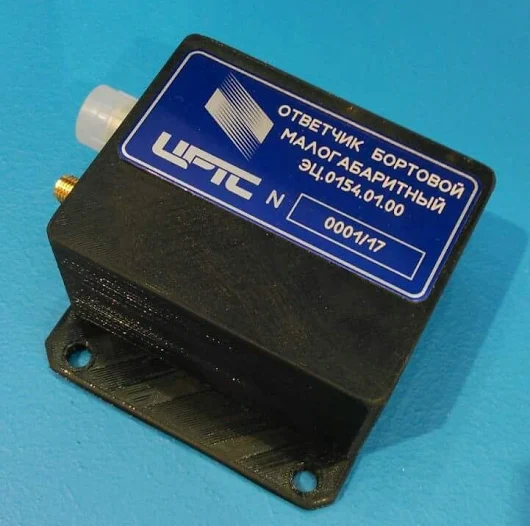USPACE - a single space for manned and unmanned aircraft
In the world of modern civil aviation, the agenda is USPACE. This is the digital airspace of the future, designed for unmanned aircraft flights on general, equal, conditions in a single non-segregated sky. To ensure the safety of joint flights, it is necessary to observe a number of important conditions, and the most important of them is the qualitative monitoring of space 24/7.
The fundamental technological basis for the implementation of unmanned aircraft flights on a routine basis (what is commonly called " integration of unmanned aircraft systems ") is 4D information about the location of all aircraft:
Joint flights of unmanned and manned aircraft also assume technological compatibility of the onboard equipment to ensure mutual visibility and coordination of maneuvers.
')
The most complete and reliable data can be obtained in the system of independent cooperative surveillance, which implies both equipping the boards with AZN-B 1090ES transponders and / or Mode S responders, as well as having a ground surveillance infrastructure capable of providing information both to pilots of remotely piloted aircraft and and pilots of manned aircraft, and air traffic control.
Based on the observation information, the services of other services (identification, monitoring, control) not directly participating in the flights can be built:
The ground-based means of cooperative observation of AZN-V / MPSN provide observation of all air traffic participants equipped with the appropriate onboard facilities. The first Russian multi-station surveillance system, Almanac, is considered as a base for creating fields of continuous seamless observation. It allows you to measure the location of air and ground objects with an accuracy of a few meters, as well as get navigation information and identification information from the board.
The compact transponders of the AZN-V 1090ES “Humming-bird” series, which allow the board to “become radio-visible” in the “Almanac” system, are intended for installation on aircraft of any size. The output power of the transponders is chosen in such a way as to simultaneously ensure the visibility of the aircraft from the ground stations (taking into account small flight altitudes and, therefore, slant distances) on the one hand, and not to overload the ether on the other.

Reliable location information with a high update rate, information about the capabilities of potentially conflicting aircraft, is necessary for the DAA system (Detect & Avoid) , which will replace the remote pilot's eyes and the ability to visually assess the environment from the aircraft cabin. The DAA system should provide the pilot of a remotely piloted aircraft with information about surrounding objects, generate warnings of dangerous approaches and recommendations for evasion, as well as recommendations and warnings of potential collisions.
The fundamental technological basis for the implementation of unmanned aircraft flights on a routine basis (what is commonly called " integration of unmanned aircraft systems ") is 4D information about the location of all aircraft:
- 3D coordinates
- prediction of location in time (course, speed, maneuver parameters, route points, etc.)
- identification (including the type and capabilities of aircraft for speed and maneuvering).
Joint flights of unmanned and manned aircraft also assume technological compatibility of the onboard equipment to ensure mutual visibility and coordination of maneuvers.
')
The most complete and reliable data can be obtained in the system of independent cooperative surveillance, which implies both equipping the boards with AZN-B 1090ES transponders and / or Mode S responders, as well as having a ground surveillance infrastructure capable of providing information both to pilots of remotely piloted aircraft and and pilots of manned aircraft, and air traffic control.
Based on the observation information, the services of other services (identification, monitoring, control) not directly participating in the flights can be built:
- supervisory and control authorities
- power departments
- search and rescue services
- technical support services
- insurers and others.
The ground-based means of cooperative observation of AZN-V / MPSN provide observation of all air traffic participants equipped with the appropriate onboard facilities. The first Russian multi-station surveillance system, Almanac, is considered as a base for creating fields of continuous seamless observation. It allows you to measure the location of air and ground objects with an accuracy of a few meters, as well as get navigation information and identification information from the board.
The compact transponders of the AZN-V 1090ES “Humming-bird” series, which allow the board to “become radio-visible” in the “Almanac” system, are intended for installation on aircraft of any size. The output power of the transponders is chosen in such a way as to simultaneously ensure the visibility of the aircraft from the ground stations (taking into account small flight altitudes and, therefore, slant distances) on the one hand, and not to overload the ether on the other.

Reliable location information with a high update rate, information about the capabilities of potentially conflicting aircraft, is necessary for the DAA system (Detect & Avoid) , which will replace the remote pilot's eyes and the ability to visually assess the environment from the aircraft cabin. The DAA system should provide the pilot of a remotely piloted aircraft with information about surrounding objects, generate warnings of dangerous approaches and recommendations for evasion, as well as recommendations and warnings of potential collisions.
Source: https://habr.com/ru/post/444378/
All Articles